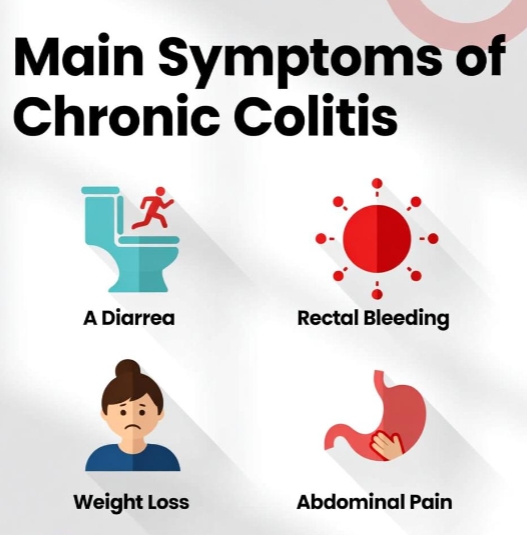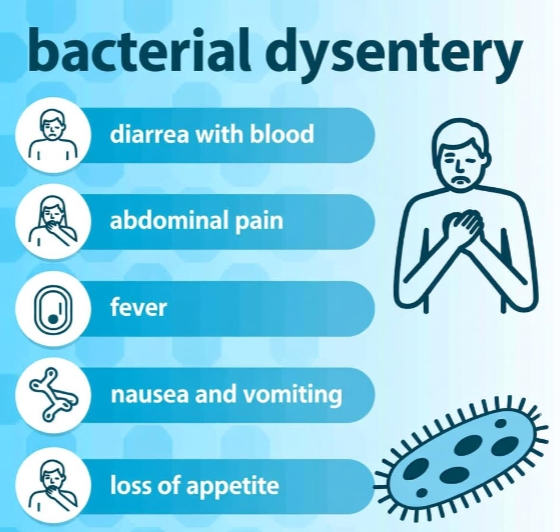Chronic colitis is a long-standing inflammatory or ischemic process that damages the colonic mucosa and, in some forms, the deeper layers. It includes ulcerative colitis, Crohn colitis, microscopic colitis, diversion colitis, and chronic ischemic change. Symptoms wax and wane over months to years, and overlap with irritable bowel syndrome is common. Recognising the dominant pattern guides colonoscopic evaluation, histologic confirmation, and tailored therapy.
- Core lower-gut complaints
Persistent or relapsing diarrhea: loose or watery stools ≥3 days per week for >4 weeks; may be bloody, mucus-laden, or purely watery depending on subtype.
Abdominal pain: crampy, colicky, usually left-lower-quadrant, relieved transiently by defecation.
Urgency and tenesmus: sudden compelling need to defecate with incomplete evacuation and prolonged straining.
Visible blood or mucus: bright red coating, streaks, or clots mixed with stool; mucus may appear as clear slime. - Systemic and metabolic clues
Fatigue and malaise: chronic cytokine release and anemia.
Weight loss: gradual reduction related to anorexia, nutrient loss, and increased catabolism.
Low-grade fever <38 °C: appears during flares of active inflammatory bowel disease.
Iron-deficiency anemia: from occult or overt chronic blood loss. - Subtype patterns
Ulcerative colitis: bloody diarrhea, urgency, left-sided pain; extraintestinal skin, eye, or joint manifestations.
Crohn colitis: right-lower-quadrant pain, non-bloody diarrhea, palpable mass, perianal tags or fistulas.
Microscopic colitis: watery diarrhea, nocturnal stools, normal endoscopic appearance, middle-aged women predominate.
Chronic ischemic colitis: post-prandial cramps, bloody diarrhea in older adults with vascular risk factors.
Diversion colitis: mucus discharge, urgency months after colostomy formation in unused distal segment. - Complication markers
Severe continuous bleeding with orthostatic dizziness, abdominal distension and absent bowel sounds (toxic megacolon), passage of large clots or melena suggesting proximal extension, and jaundice with hypoalbuminemia indicating advanced liver involvement in inflammatory bowel disease.
Summary table
| Symptom | Typical subtype | Warning threshold |
|---|---|---|
| Bloody diarrhea + urgency | Ulcerative colitis | >6 stools/day or orthostatic drop → hospitalize |
| Right-sided pain + mass | Crohn colitis | Obstruction, fever → imaging |
| Watery diarrhea, night stools | Microscopic colitis | >8 stools/day → biopsy |
| Post-meal cramps + blood | Ischemic colitis | Persistent >48 h → vascular imaging |
| Mucus only, diverted colon | Diversion colitis | Bleeding or pain → restore continuity |

